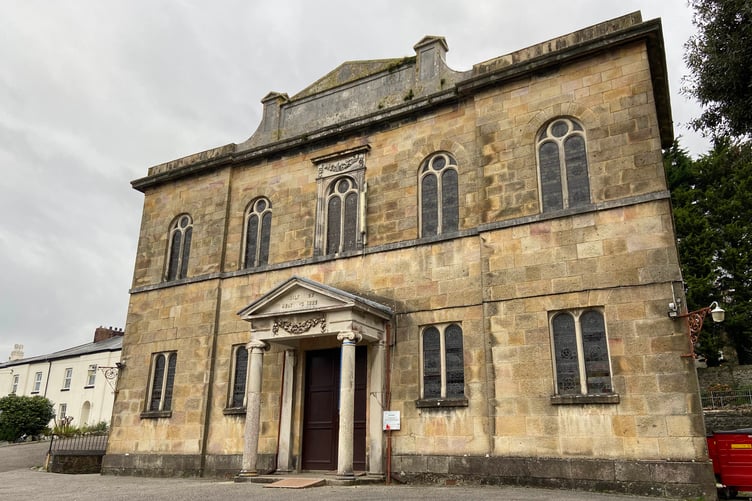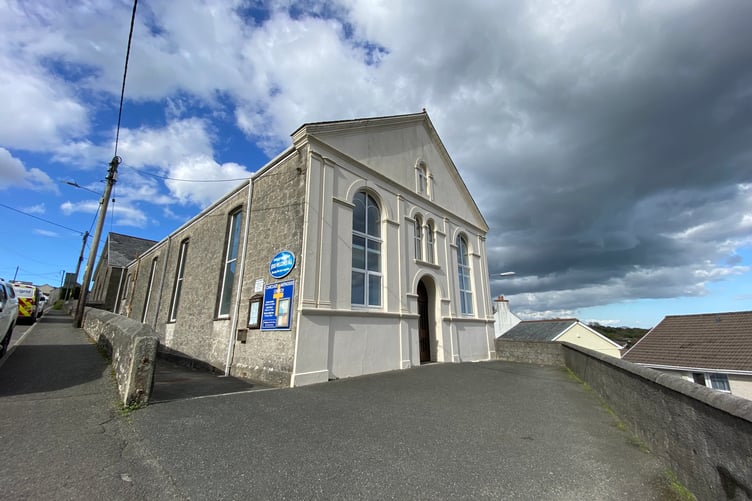AS thoughts turn back to the end of the Second World War with the 80th anniversary of VJ Day being marked, the Voice is recalling how the St Austell area took in hundreds of young evacuees during the dark days of the conflict.
The town and surrounding villages were regarded as much safer places than the country’s major cities which were repeatedly targeted by enemy bombers.
As a consequence, many children from highly-populated areas arrived at St Austell Railway Station before being sent to accommodation across the district.
Among the youngsters was Voice journalist Andrew Townsend’s uncle, Harold Trevan, who arrived from Plymouth in 1941.
Harold would go on to spend four years in the St Austell area, eventually leaving in the summer of 1945 as a 16-year-old.
Harold was a pupil at Sutton High School for Boys which was evacuated after the Blitz of Plymouth that caused tremendous suffering and damage in the city.
The national authorities had regarded Plymouth as a lower risk area at the start of the war in 1939 and it was only after the blitz that it was decided to officially evacuate children.
The destination for the staff and pupils from Sutton was largely kept a secret at the request of the government.
The story of the school’s evacuation was later told in the book, A School At War, which was written by headmaster Dr Charles Jones.
Other Plymouth schools were evacuated to different Cornish towns. Plymouth High School for Girls went to Fowey, then Newquay, while Devonport High School for Boys went to Penzance.
More than 200 boys and staff from Sutton arrived at St Austell Railway Station on May 14, 1941, escaping the despair and destruction they had grown so familiar with.
However, they soon encountered more difficulties. Dr Jones said the boys were billeted “in a town already sick of evacuees from other places”, having taken in youngsters from elsewhere since 1939.
Dr Jones said in his book: “Evacuation was no new thing to the good folks of St Austell; they had known it for 20 months and had had very heavy calls made on them.”
Not long before the Plymouth contingent arrived, a large group from Bristol had been posted to the town.
The situation in May 1941 resulted in a weary attitude among many who were more likely to offer temporary homes to further evacuees and meant compulsory measures had to be imposed on some who had not volunteered accommodation before.
This resulted initially, said Dr Jones, in some of the boys sent out to their allotted billets being refused entry at the doors and having to return to the billeting control centre. Billeting problems were to continue for the next two years. There were issues involving such things as homesickness, clashes of temperament and the behaviour of both hosts and pupils. Indeed, some boys ran away from their billets.
That said, some hosts were much appreciated for their kindness and patience, and many boys in billets found second homes and stayed in touch with their hosts after the war ended.
In the summer of 1941, Dr Jones’ school set up a boarding house at Elmsleigh in Par, the home of Beatrice Rathbone, the MP for Bodmin. A daily special St Austell bus laid on for the boys staying there also made it possible for billeting officers to utilise new billeting areas in Par, St Blazey and St Blazey Gate where people hadn’t previously been called upon to open up their homes.
Some of the pupils, when unwell, went to the sick bay set up by the billeting authority. This operated at the Grove in Charlestown. Harold Trevan, who had asthma, became a long-term resident at the Grove and the head boy there, being in charge of the other boys.
In addition, during the conflict, a dozen boys were housed at the Tremore hostel at Penwithick, while others lived in a former isolation hospital in St Austell called Trelawney.
More evacuees arrived in the St Austell area from London in 1944 owing to further bombing.
Back in May 1941, Dr Jones’ school needed to bring in equipment like desks and blackboards from Plymouth and the headmaster said transport for this was provided by the horsedrawn lorries of the St Austell china clay industry.
There had been a suggestion that the school should be housed at Menabilly House, near Fowey, later the home of novelist Daphne du Maurier, but it was deemed unsuitable. The Duporth holiday camp and Heligan, near Mevagissey, were also discounted.
Consequently, pupils had lessons in spaces provided at the County School for Boys, at Carclaze Methodist Sunday School Hall, at Bridge Methodist Hall at Mount Charles, at the Central School and at the County School for Girls.
Later other buildings were used, including St John’s Methodist Hall, No.1 Trevarthian Road, the Mengu Hall, the Old Town Hall and the Church Rooms.

Sharing a church building did cause some unusual situations for the pupils – for instance, when a coffined body awaiting a funeral was happened upon at Bridge Methodist Church.
Meanwhile, the Old Town Hall was located above a market and pupils entering had to dodge sides of beef.
Dr Jones said in his book: “Truly but for the Sunday schools, evacuation in Cornwall would have been impossible.”
The headmaster also stated that his pupils had at first been regarded with suspicion by local people and had soon, unfairly, been blamed for some local problems. He said he came to learn that “when in doubt, blame the evacuee” was a well-accepted principle across the county. However, over time matters improved and Dr Jones recorded there was “general goodwill”.
Some of the boys went on to enjoy more than just goodwill. They formed friendships with pupils at the County School for Girls and a number of these romances later resulted in marriages.
Pupils played sports matches against other evacuated schools, including King’s School, Canterbury, and schools in Cornish towns. Meanwhile, an annual gathering of evacuated schools in Cornwall would take place in Truro.
Youngsters supported the war effort in various ways, including participating in “harvest camps” in parts of Cornwall and joining people from St Austell and the surrounding villages in the summer months to gather a seaweed called gigartina during low spring tides for medicinal purposes.
One pupil decided to join a potato-lifting party in Penzance during a Whitsun break rather than return to Plymouth. While he was there, his home in the city was destroyed with his mother and grandmother both being killed.
Pupils went swimming at Bouley, Crinnis, Mevagissey, Polkerris, Porthpean and Spit. Par Sands was heavily mined and, thus, out of bounds. Some pupils hiked in the countryside around St Austell, while others went on cycles to Newquay and Looe.
When the time came for the Sutton boys to return to Plymouth, a civic party from the city visited St Austell to thank the people of the town for all they had done. A couple of days later, a special service was held in St Austell Parish Church. Then, on July 23, 1945, the boys joined a train from Penzance which picked up pupils from four evacuated schools and took them home with memories that would stay with them throughout their lives.





Comments
This article has no comments yet. Be the first to leave a comment.